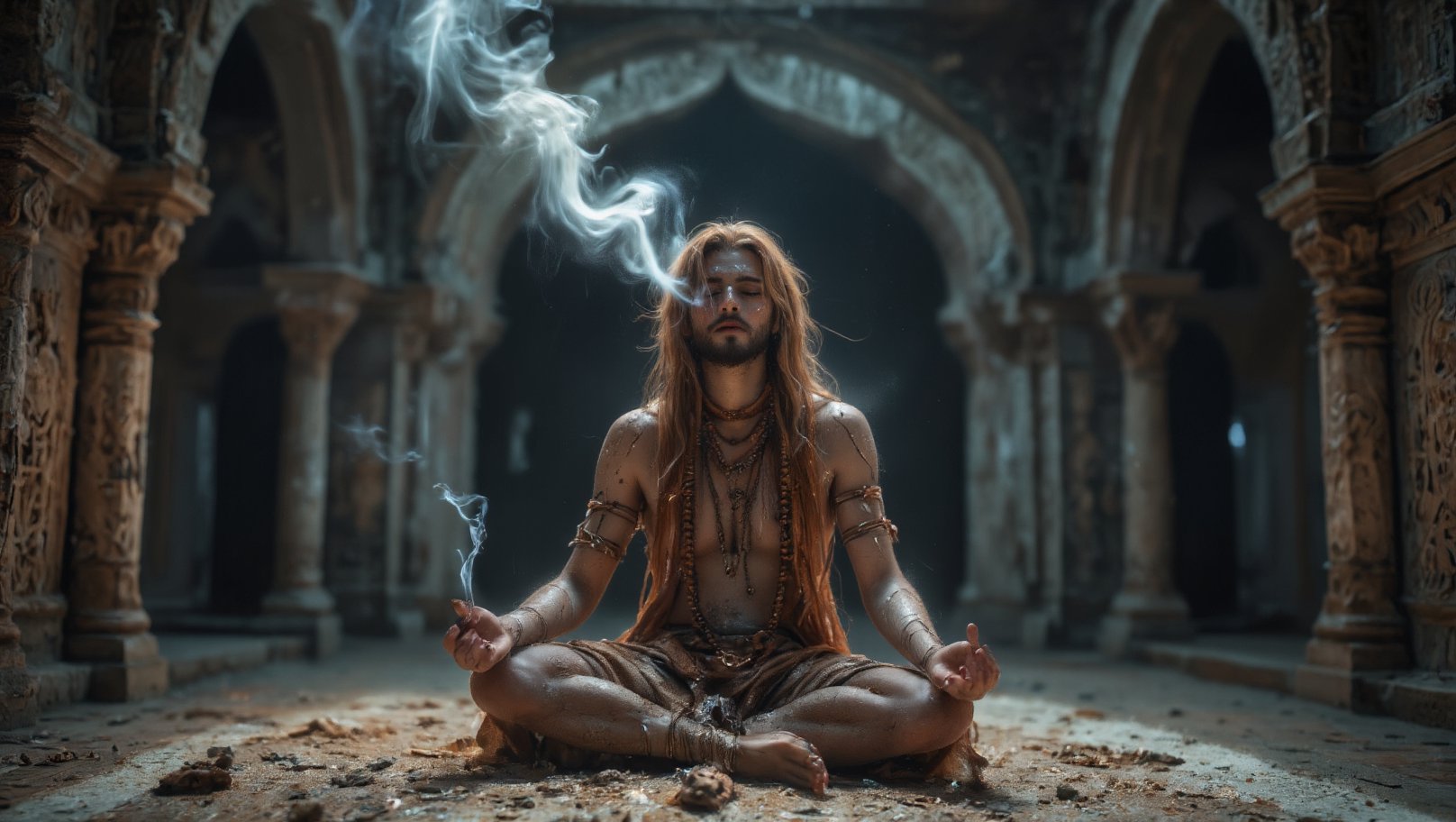A solitary Indian sadhu sits cross-legged, his body smeared with ash (bhasm) that highlights his intense, meditative presence. He wears a garland of rudraksha beads around his neck, their earthy tones contrasting against the pale ash on his skin. His eyes are closed in deep contemplation, and his long, unkempt hair falls over his shoulders. Surrounding him is a thin veil of smoke, rising from an incense or small sacred fire nearby, giving the scene an ethereal, mystical quality. The atmosphere is heavy with stillness, interrupted only by the soft curls of smoke that weave through the air. In the background looms an ancient, abandoned haveli, its crumbling walls and intricate, faded carvings telling stories of a forgotten era. The haveli, with its weathered stone and overgrown vines, adds a haunting, timeless backdrop to the sadhu’s presence, symbolizing the contrast between worldly decay and spiritual transcendence. The composition focuses on the sadhu’s serenity, framed by the eerie silence of the deserted mansion, creating a cinematic, almost otherworldly visual experience.

